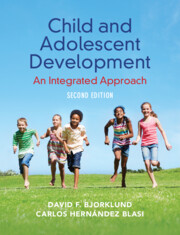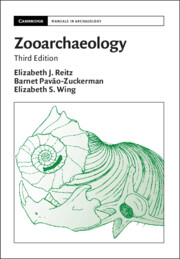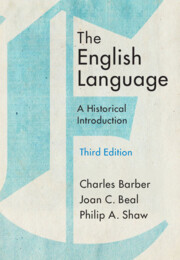Refine search
Actions for selected content:
37953 results in Cambridge Textbooks
Chapter 14 - Putting It Altogether: Extended Practice Problems
-
- Book:
- Australian Uniform Evidence Law
- Published online:
- 09 December 2025
- Print publication:
- 08 January 2026, pp 667-670
-
- Chapter
- Export citation
Chapter 12 - Discretionary and Mandatory Exclusions
-
- Book:
- Australian Uniform Evidence Law
- Published online:
- 09 December 2025
- Print publication:
- 08 January 2026, pp 596-651
-
- Chapter
- Export citation

Child and Adolescent Development
- An Integrated Approach
- Coming soon
-
- Expected online publication date:
- January 2026
- Print publication:
- 04 December 2025
-
- Textbook
- Export citation
Chapter 9 - Character
-
- Book:
- Australian Uniform Evidence Law
- Published online:
- 09 December 2025
- Print publication:
- 08 January 2026, pp 454-482
-
- Chapter
- Export citation
Figures
-
- Book:
- Historical Sociolinguistics
- Published online:
- 19 December 2025
- Print publication:
- 08 January 2026, pp vi-vii
-
- Chapter
- Export citation
Chapter 3 - Relevance
-
- Book:
- Australian Uniform Evidence Law
- Published online:
- 09 December 2025
- Print publication:
- 08 January 2026, pp 114-140
-
- Chapter
- Export citation
Acknowledgement of Country
-
- Book:
- Australian Uniform Evidence Law
- Published online:
- 09 December 2025
- Print publication:
- 08 January 2026, pp ii-ii
-
- Chapter
- Export citation
Chapter 6 - Admissions
-
- Book:
- Australian Uniform Evidence Law
- Published online:
- 09 December 2025
- Print publication:
- 08 January 2026, pp 240-311
-
- Chapter
- Export citation
Appendix - Suggested answers to practice problems in Chapters 2–13
-
- Book:
- Australian Uniform Evidence Law
- Published online:
- 09 December 2025
- Print publication:
- 08 January 2026, pp 671-685
-
- Chapter
- Export citation
Chapter 1 - Introduction
-
- Book:
- Australian Uniform Evidence Law
- Published online:
- 09 December 2025
- Print publication:
- 08 January 2026, pp 1-25
-
- Chapter
- Export citation
9 - Multilingualism and Language Contact
-
- Book:
- Historical Sociolinguistics
- Published online:
- 19 December 2025
- Print publication:
- 08 January 2026, pp 176-201
-
- Chapter
- Export citation
Contents
-
- Book:
- Historical Sociolinguistics
- Published online:
- 19 December 2025
- Print publication:
- 08 January 2026, pp v-v
-
- Chapter
- Export citation
Chapter 8 - Credibility
-
- Book:
- Australian Uniform Evidence Law
- Published online:
- 09 December 2025
- Print publication:
- 08 January 2026, pp 422-453
-
- Chapter
- Export citation
Chapter 13 - Facilitation of Proof and Ancillary Matters
-
- Book:
- Australian Uniform Evidence Law
- Published online:
- 09 December 2025
- Print publication:
- 08 January 2026, pp 652-666
-
- Chapter
- Export citation
Index
-
- Book:
- Historical Sociolinguistics
- Published online:
- 19 December 2025
- Print publication:
- 08 January 2026, pp 243-248
-
- Chapter
- Export citation

Zooarchaeology
- Coming soon
-
- Expected online publication date:
- January 2026
- Print publication:
- 18 December 2025
-
- Textbook
- Export citation

The English Language
- A Historical Introduction
- Coming soon
-
- Expected online publication date:
- January 2026
- Print publication:
- 08 January 2026
-
- Textbook
- Export citation
10 - Support Vector Machine Classifier
-
- Book:
- Machine Learning with Python
- Published online:
- 22 February 2025
- Print publication:
- 31 December 2025, pp 495-532
-
- Chapter
- Export citation
Chapter 9 - Stress Concentration
-
- Book:
- An Introduction to Solid Mechanics
- Published online:
- 28 February 2025
- Print publication:
- 31 December 2025, pp 201-226
-
- Chapter
- Export citation
1 - Overview of Machine Learning
-
- Book:
- Machine Learning with Python
- Published online:
- 22 February 2025
- Print publication:
- 31 December 2025, pp 1-52
-
- Chapter
- Export citation
